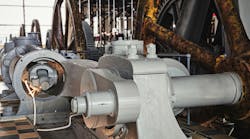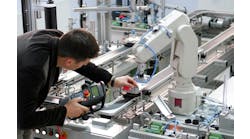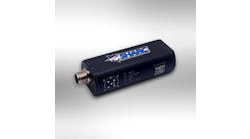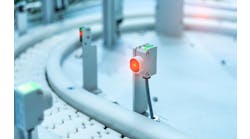Technology has transformed all types of sensors leading to massive improvements in manufacturing enterprises through better quality control and many others.
Having started my instrumentation career in heavy industry in the 1960s, when pneumatics was very much the core competency, and having moved on through the 4-20 mA analog era, finally ending up in the world of digitalization, I have been extremely blessed to have been able to witness these incredible changes in the process industries in which I have earned a living for my family.
Get your subscription to Control Design’s daily newsletter.
Speaking of pneumatics and the evolving technology being applied to 20-100 kPa process control valves, one cannot cease to admire how smart sensors coupled with the latest smart diagnostic systems have kept these valves very much in demand. If it were not for this, electrically powered control valves, due to their communication capabilities, might have taken a large slice of the valve market.
Pneumatics are, by comparison, simple and uncomplicated devices, easily maintained and calibrated in-house, with no specialized service company involved. Because they’re fitted with smart positioners, which provide full maintenance diagnostics, they have saved many companies money.
I once travelled 300 miles by car to tend to a faulty control valve, for a company who had no instrument staff, where all I did was re-attach the positioner feedback arm to the valve stem, thus allowing the boiler feedwater to flow once more. The time taken to rectify this was less than 10 minutes and the company’s engineering manager was in total disbelief when my solution solved the problem. It worked 100%, however, so he was not in a position to argue. I drove the 300 miles back home the same day.
In my career, I have had the opportunity of finding solutions to many challenging problems.
It wasn’t until 1979, when I was offered the position of instrument engineer at a sugar mill, that these rose in magnitude to the normal daily operations found in industry.
I was faced with an aging factory in dire need of automation, and, in the first 13 years I spent there, I systematically installed the latest, at the time, high-tech analog measurement and control instrumentation in the entire factory.
One of the major challenges was the measurement and control of the multi-stage steam-turbine-driven roller sugar-cane crushers. The shredded cane was fed into chutes, the levels in which were required to control the speed of these turbines. The existing solution was not successful in that the measurement of the conductivity of the shredded cane across the chute to determine its respective height in the chute was not reliable and caused much under- and over-feeding. The solution I arrived at was a system of a solid reference strip, vertically mounted on Perspex, electrode on the one side of the 84-inch-wide chute, with a series of nine button probes, also mounted on Perspex fitted to the other side of the chute.
This worked to a degree but suffered due to the signals across the chute being interrupted by air pockets in the cane mass. I found the ultimate solution was to incorporate positive feedback to the system of logic gates so that, once detected, the signal latched on. This series of electrodes provided the 4/6/8/10/12/14/16/18/20-mA output to the turbine speed controller. It proved both fully functional and highly efficient.
The second major sensor-related problem was the automated cane tippler system, whereby small cane-filled rail cars were hydraulically pushed into a 270° rotating tippler mechanism. All position sensors used in the operation to position the car, lock it in place, rotate it and then unlock and eject on the rail system were of the simple mechanical type.
These devices suffered many failures due to the ruggedness of the application, in which full-length sticks of cane, protruding out of the car, came into contact with these switches, thereby damaging them. I found a simple solution, in that I installed a highly rated series of magnetic switches, extremely rugged and virtually bullet-proof. Connecting cable was permanently connected, thus the ingress of moisture was prevented. End of problem.
Then there was the not-so-user-friendly system of monitoring the many boiler drum level gauge glasses, whose installation was mandatory under safety regulations. Because these were installed on the boiler drum and four or more floors above the ground, it was not possible to read them continuously. The interim solution was to drop two long lines down to ground level and mount a second gauge glass within normal visionary contact. The problem here was that, with many boilers, not all of these indicators were in direct line of sight of the boiler control room. This meant that the operator still had to leave the control room to verify any suspected problem. The simple answer, by 21st Century standards, was to install cameras facing each of the drum-mounted indicators and provide a desktop computer, where the screen was split into four segments, showing each of the four boilers. It was very much appreciated in the 1970s.





